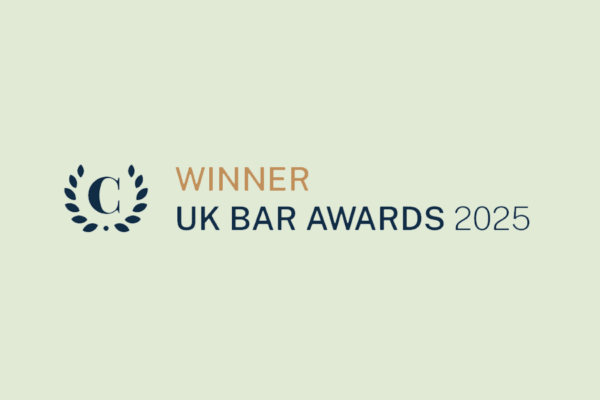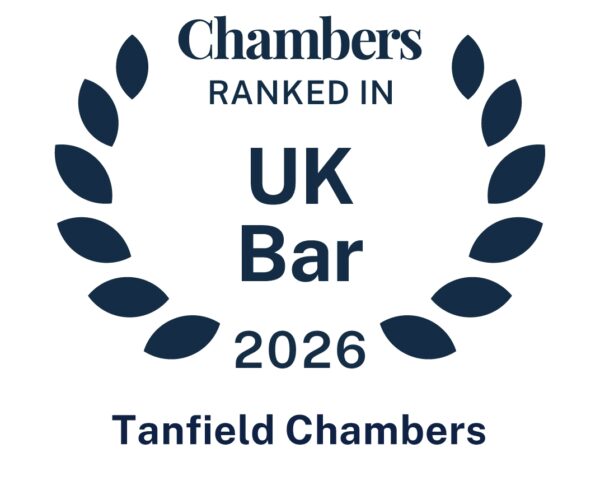In his formidable and scholarly judgment in Cooper and another v. Powell
No second bite at the cherry – dealing with Land Registry rejections

Daniel Bromilow examines the significant consequences of an administrative rejection of an application by the Land Registry, particularly in the light of the High Court’s ruling in Ainscough v Ainscough [2020] EWHC 2909 (Ch).
This article explores the procedural pathways for applications concerning issues like adverse possession or the rectification of the register under the Land Registration Act 2002 (LRA 2002), which can be determined administratively or referred to the First Tier Tribunal (FTT). It considers the critical question of what recourse an applicant has after their application is rejected by the Land Registry without a tribunal hearing. Using the Ainscough case as a detailed example, this article analyses why a subsequent attempt to litigate the same issue in court was dismissed as an abuse of process. The discussion highlights the potential procedural pitfalls for disappointed applicants, emphasising the limited options and strict timeframes for challenging an administrative decision and illustrating that there may be no “second bite at the cherry”.
There are two ways in which an application to the Land Registry can be dealt with. Most will be dealt with administratively, by someone at the Land Registry simply making a decision about whether the application should be allowed or not. Where a party objects to an application, then the application will be referred to the First-tier Tribunal (FTT) for determination in accordance with section 73(7) of the Land Registration Act 2002 (LRA 2002), but many cases will be rejected by the Land Registry through administration action without any involvement from the FTT. The majority of applications rejected in this manner will be routine, and will be rejected for technical defects of procedure. However, this will not always be the case.
All applications for registration as the proprietor of registered land on the grounds of adverse possession must be made to the Land Registry, unless the person in adverse possession is the Defendant in possession proceedings and can invoke adverse possession as a defence in those proceedings pursuant to section 98 of the LRA 2002. Unless the person in adverse possession can rely upon section 98, a claim in adverse possession can no longer be pursued through litigation in the courts but must be made by way of an application to the Land Registry.
Where a person seeks the amendment or rectification of a registered title pursuant to Schedule 4 to the LRA 2002, this can be done either by way of an application to the Land Registry or by way of litigation in the courts, the Land Registry and the courts having largely corresponding jurisdictions in this regard. Nonetheless, a considerable number of boundary disputes start off with an application for rectification or amendment of the register made to the Land Registry, some of which go on to be dealt with by the FTT, and some of which are dealt with administratively by the Land Registry.
Ainscough v Ainscough
It might be thought that where an application either for registration on the grounds of adverse possession or for amendment or rectification of the register is rejected by the Land Registry without being referred to the FTT, but simply by way of administrative action, the applicant can always seek to have the underlying dispute resolved through litigation in the courts at a later date. However, as the case of Ainscough v Ainscough [2020] EWHC 2909 (Ch) illustrates, that is not the case.
In the case of Ainscough v Ainscough, a property was registered in the joint names of the Claimant and the First Defendant, the Claimant’s younger brother. It was subject to a mortgage in favour of Bank of Scotland, the Second Defendant, the mortgage having been granted by the Claimant’s son at a time when he was the sole registered proprietor of the property. The Claimant applied to the Land Registry for an amendment to the registered title by the removal of the registration of the mortgage. This application was made on the basis that the transfer of the property into the name of his son was the result of a forged transfer purportedly made by him and his brother at a time when the Claimant was in prison, such that his son was never in a position to grant a mortgage of the property.
The Land Registry informed the Claimant that his application for rectification by the removal of the registered charge had been rejected. While the Land Registry accepted that the charge had been registered as the result of a mistake, the Land Registry considered (in accordance with paragraph 6(3) of Schedule 4 to the LRA 2002) that the register should not be rectified due to exceptional circumstances. The exceptional circumstances identified by the Land Registry were that the Claimant had received from his son part of the sum advanced by Bank of Scotland under the mortgage and had made repayments of the mortgage after having discovered that it had been taken out by his son. The Land Registry therefore concluded that the Claimant had adopted the mortgage and that this constituted exceptional reasons for not removing the registered charge from the title.
Some three years after the application for the removal of the registered charge had been rejected by the Land Registry, the Claimant issued Part 8 proceedings in which he again sought the removal of the registered charge. Bank of Scotland objected to this on the basis that it constituted an abuse of process.
There was of course no question of the Land Registry’s decision to reject the application for the removal of the registered charge giving rise to any issue estoppel or the decision being res judicata. The Land Registry is not a court or tribunal, and so these principles would not apply to its decisions. However, Bank of Scotland argued, by reference to previous authorities dealing with collateral challenges to decisions taken by administrative bodies, that the litigation did constitute an abuse of process.
The judge held that it was in fact an abuse of process, applying the test identified in Re Barings plc (No 3) [1999] BCC 639 of “whether in all the circumstances of the particular case it would be manifestly unfair to a party to litigation before the court, or would otherwise bring the administration of justice into disrepute among right-thinking people, to allow the claim to proceed.”
Applying that test, the judge concluded that it was an abuse of process for the Claimant to seek to relitigate the same issue as that dealt with by the Land Registry. If the Claimant wanted to challenge the Land Registry’s decision to reject his application, then the appropriate course of action, the judge held, was for the Claimant to have sought judicial review of the Land Registry’s decision within the three month time limit applicable to judicial review cases.
The judge went on to identify other reasons, specific to the facts of that particular case, as to why it would be an abuse of process to allow the claim to continue and held that in any event the Land Registry had been justified in reaching the conclusion that it had. Nonetheless, the mere fact that the Claimant’s case was an attempt to relitigate matters already dealt with administratively by the Land Registry was held to be sufficient to render the claim an abuse of process. So, “no second bite at the cherry”, a phrase used twice by the judge in his judgment.
Conclusion
In circumstances where there is a choice between an application to the Land Registry and litigation through the courts, the decision in Ainscough v Ainscough may make litigation seem a more attractive option. The courts will generally not dismiss a claim on a summary basis without a hearing, and where a claim is struck out, there is a clear route of appeal if that decision is wrong.
However, the main consequence of the decision is that where an application is rejected by the Land Registry, the only recourse by a disappointed applicant is judicial review, to which a three month time limit applies by virtue of CPR rule 54.5(1)(b). Where the Land Registry rejects an application, and the applicant considers that the Land Registry was wrong to do so, then time is of the essence and judicial review the only route to challenging that decision.
This article was first published in the Practical Law’s Property Litigation Column.
This content is provided free of charge for information purposes only. It does not constitute legal advice and should not be relied on as such. No responsibility for the accuracy and/or correctness of the information and commentary set out in the article, or for any consequences of relying on it, is assumed or accepted by any member of Tanfield or by Tanfield as a whole.






